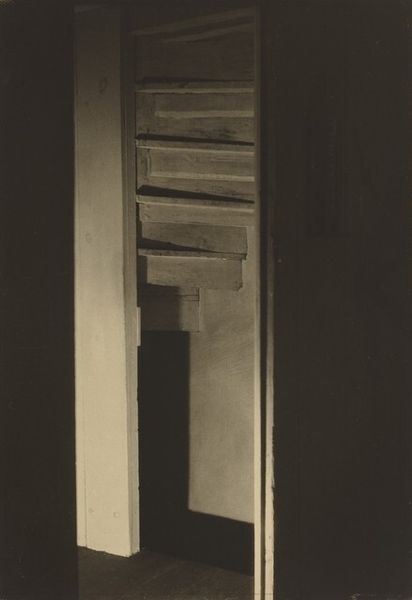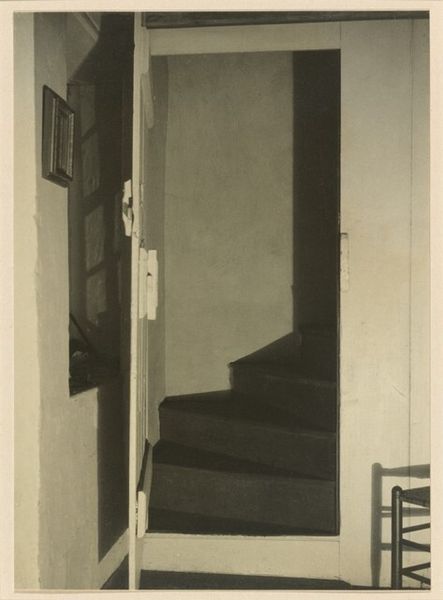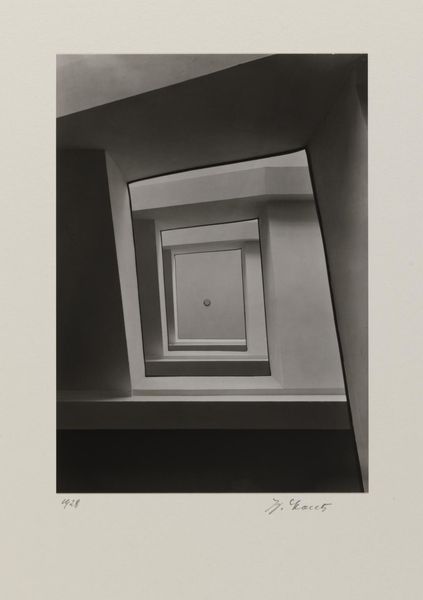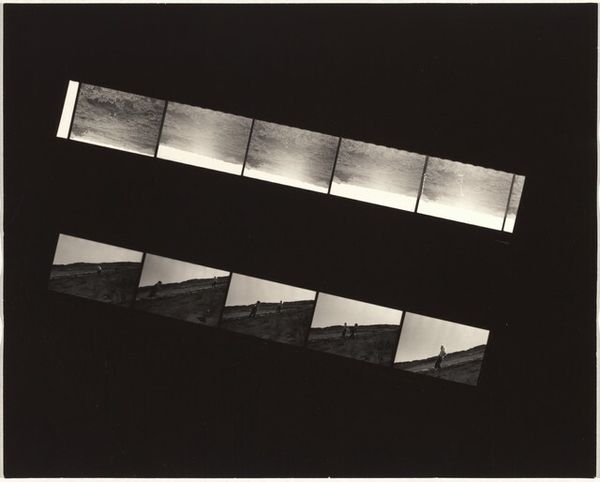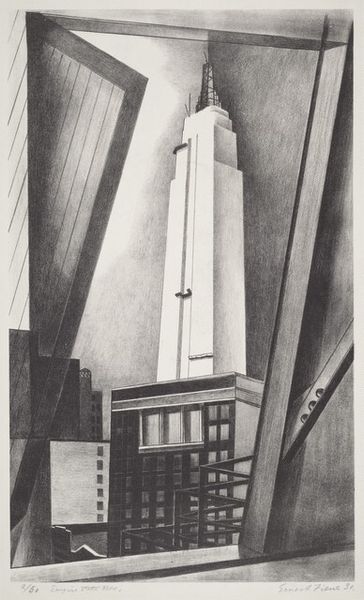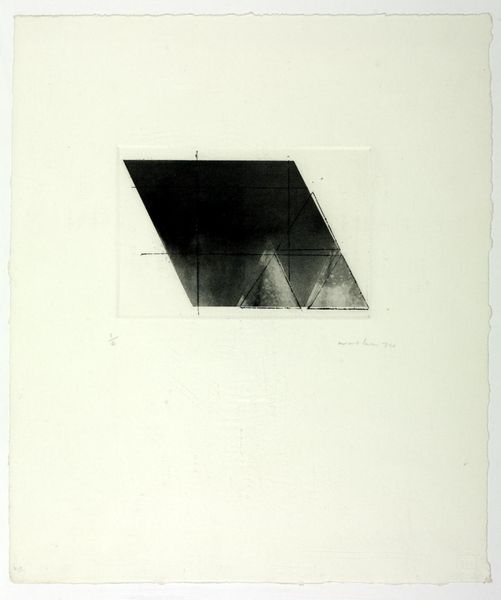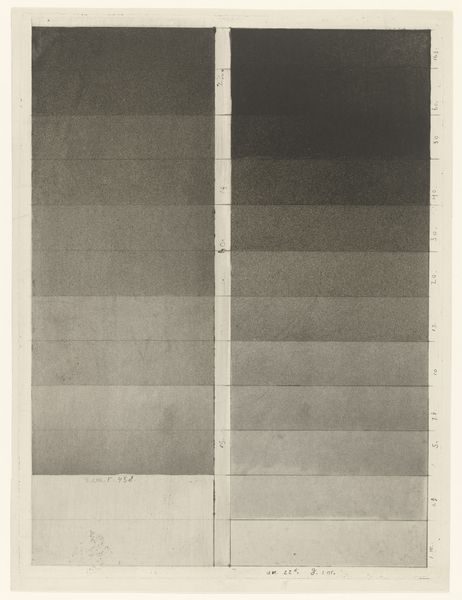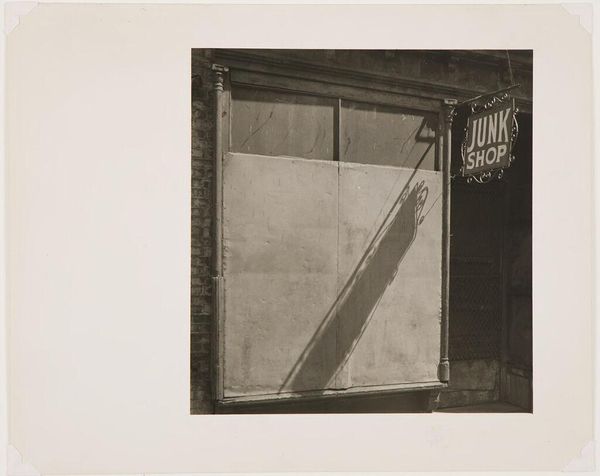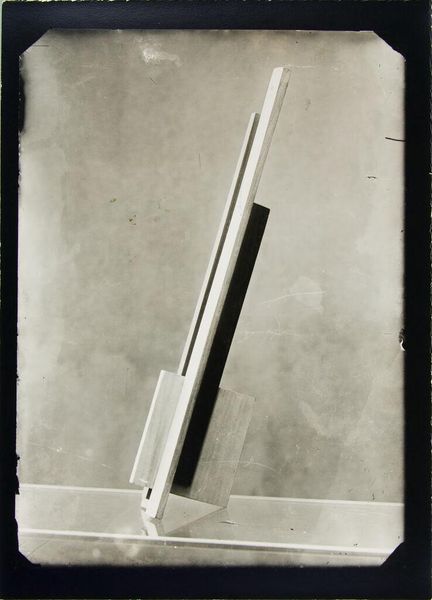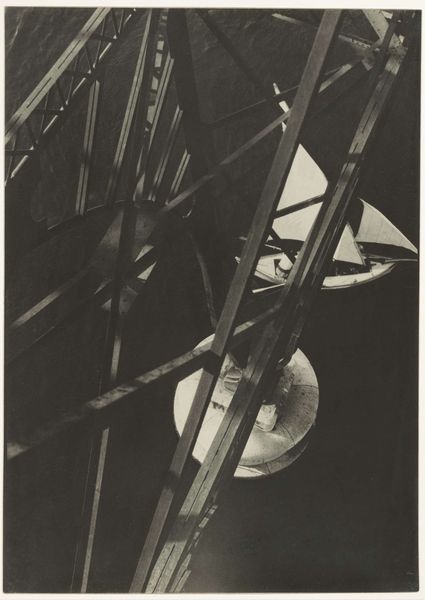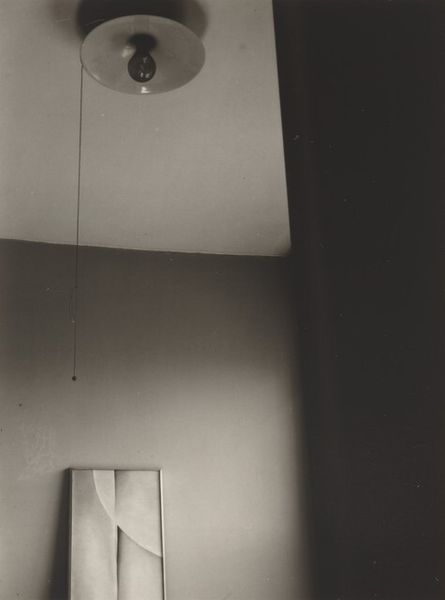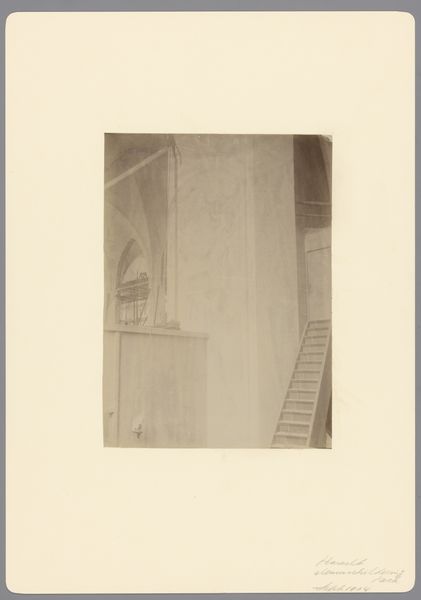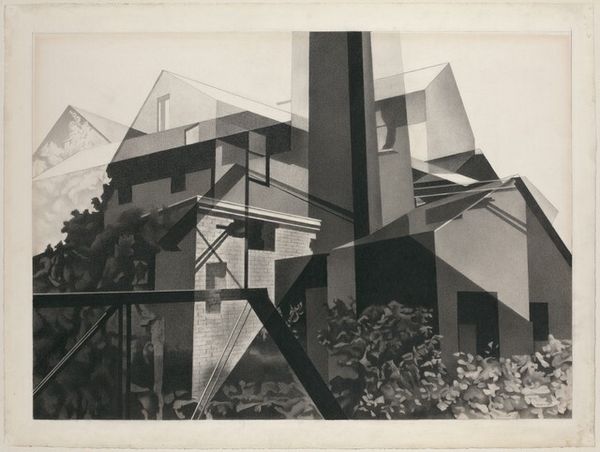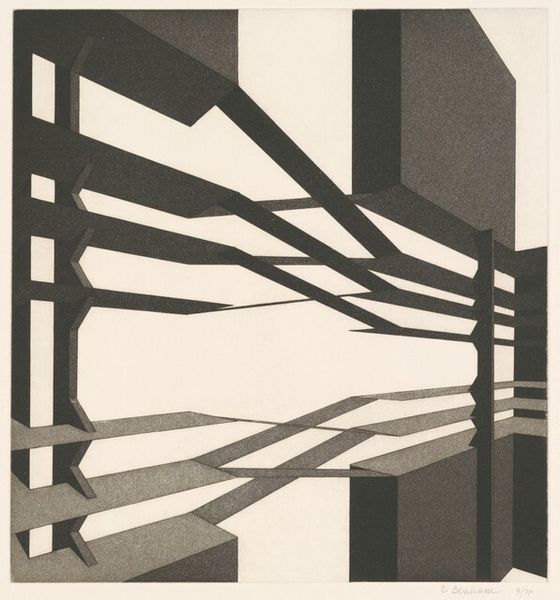
photography, gelatin-silver-print
#
constructivism
#
photography
#
geometric
#
gelatin-silver-print
#
cityscape
#
bauhaus
Copyright: Public domain
Curator: Let's explore this striking gelatin-silver print titled "Xanti Schawinsky on a Bauhaus Balcony" captured by László Moholy-Nagy around 1928. Editor: My initial impression is one of daring. The extreme upward angle, combined with that lone figure perched precariously on the edge, creates a thrilling tension. Curator: Precisely! Moholy-Nagy, a prominent figure of the Bauhaus, employs sharp angles and dynamic composition here. Note how the geometric regularity of the balconies is interrupted by the human figure, creating a stimulating contrast. The formal properties exhibit his keen interest in challenging traditional perspectives through the lens. Editor: That figure certainly holds a powerful symbolic weight, almost as an Icarus for the modern age, daring to challenge architectural limits in search of freedom or innovation. Do you think there's a conscious symbolism behind this near-anonymous figure on the edge? Curator: I suspect Moholy-Nagy sought to explore spatial relationships more than a pre-determined symbolic agenda. It’s likely that Schawinsky's pose was guided by a performative intent to integrate the human form within a pre-defined set of modernist visual structures. Observe how the interplay of light and shadow amplifies the structural complexity of the balconies and dramatizes the scene, contributing to its captivating impact. Editor: The Bauhaus itself can be interpreted symbolically. A Utopian experiment aimed at uniting art, craft, and technology. That lone figure then becomes emblematic of the individual striving to find their place within that ambitious project. Or perhaps even of testing the limits of such an endeavour. Curator: An interesting reading. I remain intrigued by the absence of any contextual environment – the sky offers a pure, unmodulated field. The visual experience lies instead within the relationships between the abstract architecture, the singular human form, and the tonality of the print itself. Editor: It does encourage the viewer to consider the human condition within a highly designed, even artificial setting. To reflect on progress, perhaps with a healthy dose of trepidation? The photograph's geometry frames and isolates that symbolic question beautifully. Curator: Indeed, after having parsed it piece by piece and engaging its complex geometry, I see a continued need to recontextualize it according to Bauhausian formal concepts. Editor: And I continue to find the image powerfully relevant, and it feels less a historic artifact and more a pertinent prompt of discussion today.
Comments
No comments
Be the first to comment and join the conversation on the ultimate creative platform.
